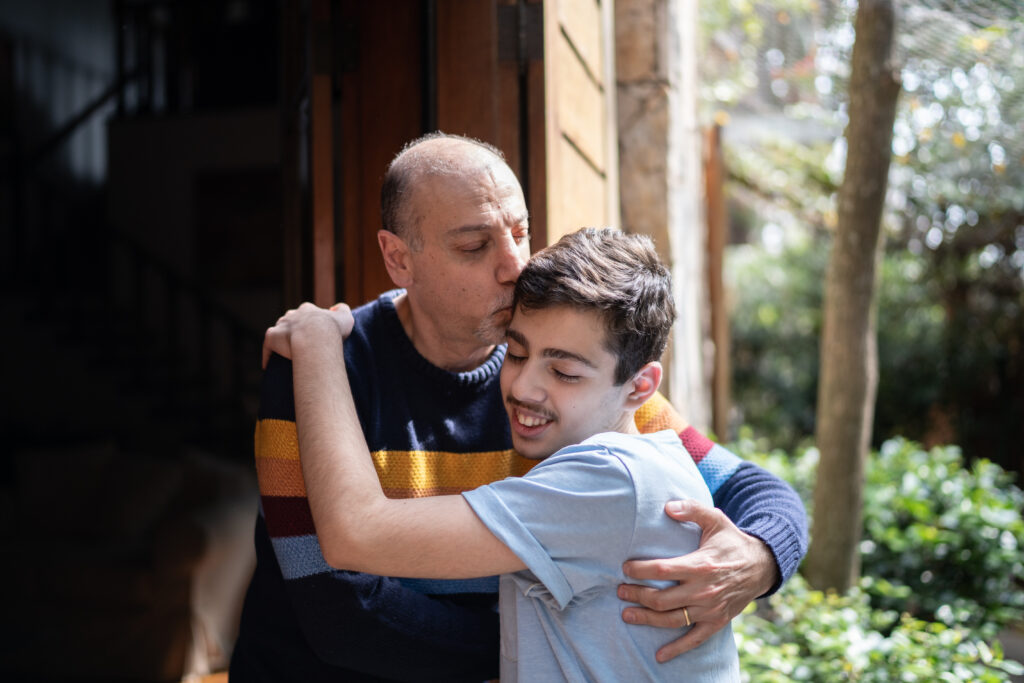
Adolescents with ASD struggle with communication. They are neurodivergent and, although they may try hard to understand social interactions, they may struggle. As parents, becoming aware of these traits and the ways ASD teens perceive the world will help adapt conversations and situations to a more friendly scenario. While not every adolescent with ASD displays the same peculiarities, we will discuss commonalities among most adolescents with ASD.
Understanding Their Desire to Communicate
First of all, you may wonder if your adolescent with ASD wants to have a conversation with you or not, as they seem to isolate themselves most of the time. Keep in mind that they may still wish to start a conversation, even if it appears they do not make eye contact or pick up social cues.
Simplify Your Communication
Remember that it may take them longer to process what you are saying, and it may take longer to enter a dialogue and answer your questions. It can take longer for ASD adolescents to process the information you tell them; therefore, it is easier if you offer short, clear sentences spoken slowly, so they do not feel overloaded with information.
Focus on the important words of the conversation and repeat them often, stressing their importance. Whenever possible, use more affirmations than questions, as questions take longer to process for adolescents with ASD. Make use of clear punctuation when speaking.
Use Visual Aids and Avoid Sarcasm
When using questions, it may be useful to include a few options within the question for them to choose from. As teenagers with ASD are not very good at picking up body language signals, it can help if parents reduce the use of body language when addressing them and instead use pictures and visual material. ASD teenagers can take what you say literally, so whenever possible, avoid abstract content and sarcasm.
Focus on the important words of the conversation and repeat them often, stressing their importance. Whenever possible, use more affirmations than questions, as questions take longer to process for adolescents with ASD
Dr Emma Allende
Starting the Conversation
If you find it difficult to start a conversation with your ASD adolescent, start talking about the subject they are most interested in and gradually shift onto other subjects. It is advisable to start the conversation with their first name; this will help focus their attention on what you have to say. It is well known that people feel good when they hear their names. This is even more important when trying to start a conversation with a teenager with ASD.
Managing Frustration and Patience
From time to time, as a parent, you may feel as if “he/she gets on my nerves.” Please do not take anything personally, as although it may feel personal to you, it may be just a way of expressing themselves, and they do not mean anything personal to you; it is just the way they say it, not what they actually mean. Patience is key when communicating with teenagers with ASD. If you struggle with your patience, put yourself in their shoes, offer compassion, and see how much they struggle to communicate with you.
Choosing the Right Moment
Wait for the right moment to talk to your adolescent ASD child. As they tend to be overloaded with external stimuli, choose quieter times, such as when they are going to sleep or when it is quiet in the house. You may find that your teen with ASD is still processing the last sentence you said to them and may be struggling to find how to respond to you.
Redirecting the Conversation
If the dialogue is going in a different direction from what you expect, calmly redirect with your next question and bring them back on track. This does not necessarily mean that they do not want to continue talking about the subject. If their emotions escalate during the conversation, give them room and reassure them. Avoiding extra stimuli allows your adolescent with ASD to focus more on what you are trying to communicate to them. Do not forget that “practice makes perfect.”
Seeking Support and Using Positive Reinforcement
Joining a group of parents of ASD teenagers can be of great support, too, as experiences are shared, along with tips and advice.
Using the principles of positive parenting can help, as adolescents with ASD respond well to positive reinforcement and praise. If you praise good behaviour, they will remember it and aim to repeat it so you both feel good.






